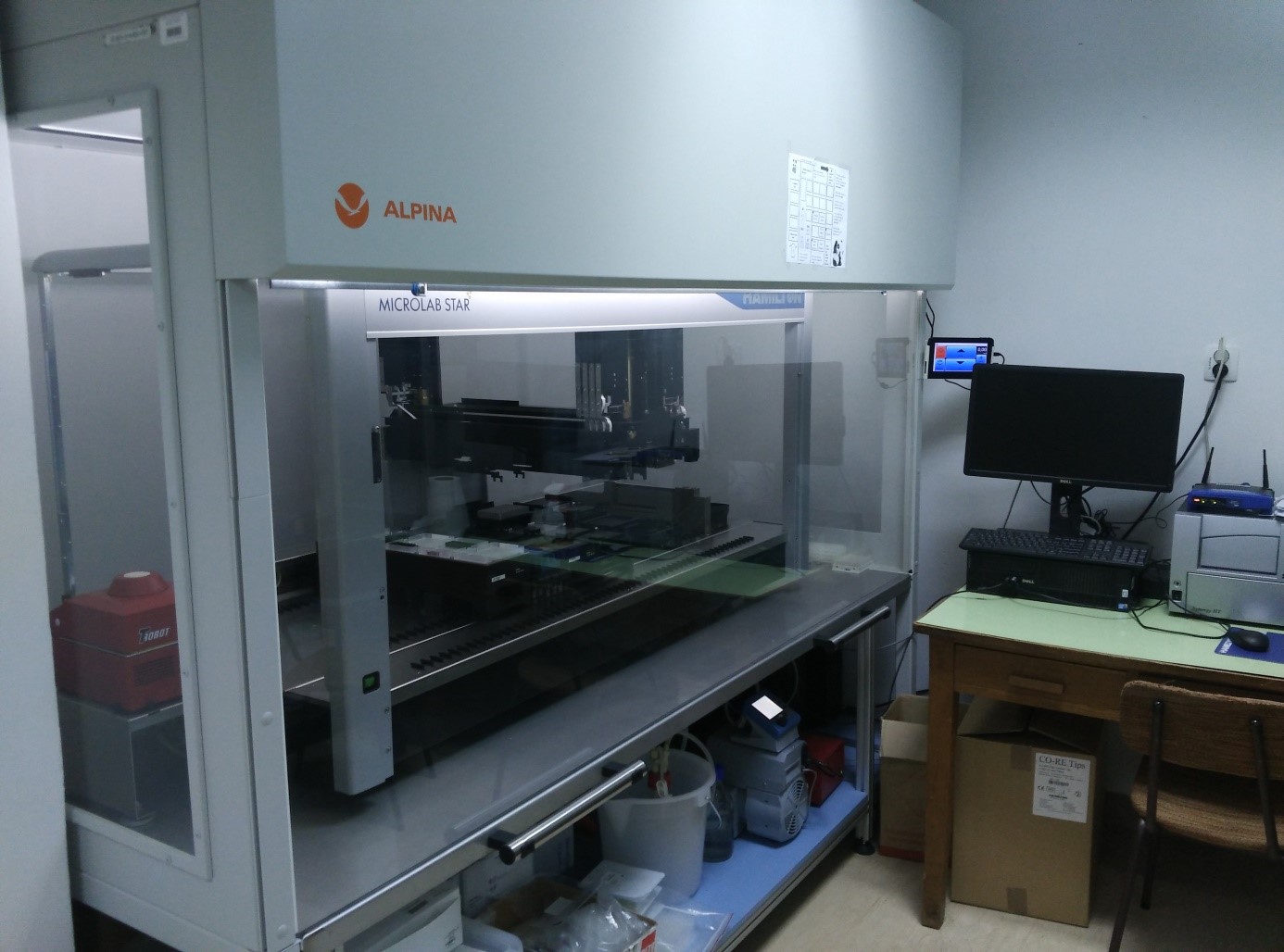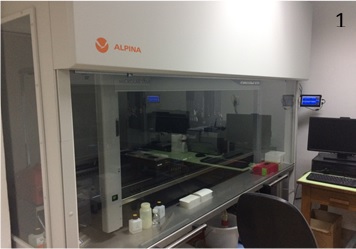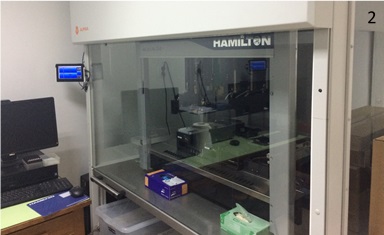Museum history
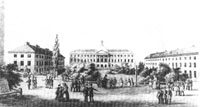 The traditions of this Division stretch back to the beginning of the 19th century, when the first exhibits were put on show in Krakowskie Przedmieście Street, in the Kazimierzowski Palace, by the “Zoological Cabinet” to Warsaw Royal University.
The traditions of this Division stretch back to the beginning of the 19th century, when the first exhibits were put on show in Krakowskie Przedmieście Street, in the Kazimierzowski Palace, by the “Zoological Cabinet” to Warsaw Royal University.
Organised in line with 19th-century practice – with specimens of common animal species arranged in line with their taxonomy – the Museum won renown for itself among the inhabitants of the Polish capital.
In 1919, there was enrichment of both the collections and the venues at which they went on show when a merger between the Zoological Cabinet and the Branicki Museum took place. Post-War, the first effort was to mount a permanent exhibition of specimens belonging to all possible systematic groups of animal. This was thus to serve as an aid to the teaching of zoology in schools – a purpose it served pretty effectively for a number of years. As time passed, more and more rooms were pressed into service for this purpose, and then increasingly for the organization of temporary displays (e.g. anything from ”Our Institution’s Traditions of Friendliness and Cooperation” to “The Phylogeny and Systematic Status of the Reptiles”).
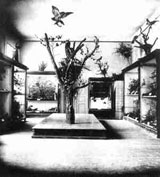 Between 1959 and 76, hired premises in the Palace of Culture and Science were used to set up an exhibition centering around the fundamental division into vertebrates (on show under the title “The Evolution of Animals with Backbones”) and invertebrates (”A Review of Invertebrate Animals”). The several shorter-term displays and exhibitions indicate how times were beginning to change, their titles including “Charles Darwin: His Life and Work”, “Nature Conservation”, “Ornithological Photography” and “Animal Geography”). Happily, the combined permanent-temporary approach now being taken by the Institute’s staff was earning them ever more of a good name across Poland. So much so that the first cooperative ventures with other museums around the country began to be launched. Altogether, such cooperation with close on 20 museums was entered into throughout the period 1964-1976, the partners in different regions receiving substantive good advice on how to proceed, draft versions of how the displays might look, and of course loans of many specimens, prepared as necessary. The advice given ultimately evolved into the fully-fledged provision of training.
Between 1959 and 76, hired premises in the Palace of Culture and Science were used to set up an exhibition centering around the fundamental division into vertebrates (on show under the title “The Evolution of Animals with Backbones”) and invertebrates (”A Review of Invertebrate Animals”). The several shorter-term displays and exhibitions indicate how times were beginning to change, their titles including “Charles Darwin: His Life and Work”, “Nature Conservation”, “Ornithological Photography” and “Animal Geography”). Happily, the combined permanent-temporary approach now being taken by the Institute’s staff was earning them ever more of a good name across Poland. So much so that the first cooperative ventures with other museums around the country began to be launched. Altogether, such cooperation with close on 20 museums was entered into throughout the period 1964-1976, the partners in different regions receiving substantive good advice on how to proceed, draft versions of how the displays might look, and of course loans of many specimens, prepared as necessary. The advice given ultimately evolved into the fully-fledged provision of training.
The exhibiting activity of the Institute was suspended in the years 1976-1992. However, in the latter year a Division of Exhibitions and Popularisation was reactivated. This then put on two exhibitions whose permanent venue was the Palace of Culture and Science, these being entitled ”Animals of South America from the Collections of the Museum and Institute of Zoology PAS” and ”Do We Know Them? The Earth’s Environments for Life”. On top of that a whole series of temporary exhibitions were mounted, like “Hummingbirds”, “Seashells”, ”Childhood has the Wings of a Butterfly”...”, ”Journeys Around an Invisible World – a Display of Scanning Nature Photography” and “The Noah’s Arks of Our Times – Selected National Parks of the World”).
Regulations of the scientific collections of the MIZ PAS
§ 1
The scientific collections of the Museum and Institute of Zoology, Polish Academy of Sciences (MIZ) consist of specimens of extant and extinct animals, as well as their parts and products.
§ 2
The organizational unit of MIZ appointed to take care and keep a record of the collections, as well as to maintain and render them accessible, is the Division of Collections of the Zoological Museum.
§ 3
Collections stored in the repositories of the MIZ Research Station in Palmiry are accessible at weekdays during working hours.
The repositories may be opened only by the Head of the Division of Collections or authorized personnel of the Division of Collections.
§ 4
Specimens and their storage conditions, as well as the documentation affixed to the specimens, must not be altered without prior permission of the Head of the Division of Collections.
§ 5
The MIZ must receive credit in exhibit labels, catalogues and publications based on the use of specimens from its collections.
The acronym 'MIZ' should be used to cite the MIZ specimens.
Authors should deliver to the Zoological Museum a reprint of each publication based in whole or in part on MIZ specimens.
LOANS
§ 6
Loans of specimens from the MIZ collections require prior approval of the Head of the Zoological Museum.
§ 7
Specimens may be loaned for research to:
1. Biologists holding a doctor degree and employed by a scientific institution.
2. Other individuals able to submit a written certificate of endorsement from a biologist holding a doctor degree and employed by a scientific institution.
§ 8
Specimens may be loaned for non-research purposes on terms specified in a written contract signed by the MIZ Director and the borrower.
§ 9
Loans will be granted on the basis of a written loan agreement, which specifies the number, condition and loan terms of the specimens.
Loans will be granted for no more than one year. Any extension request must be made in writing by the borrower at which time the Head of the Zoological Museum will consider and respond in writing granting approval or asking for the return of the material.
Loans will not be granted to individuals or institutions that did not return previously borrowed specimens on time (until the specimens are returned).
DONATIONS
§ 10
Donations of specimens from the MIZ collections will be granted by the MIZ Director after approval of the Head of the Zoological Museum.
§ 11
Individuals not employed by MIZ, who identified to species a taxonomically undetermined collection of invertebrates, may be granted a donation of up to 10% of the identified specimens of each of the identified species for the scientific institution of their choice, excluding holotypes.
Requests for donations should be made in writing to the Head of the Zoological Museum, including a list of the specimens suggested for the donation. All the identified specimens must first be returned to MIZ.
LOSS OR DAMAGE
§ 12
In case of loss or damage of a part of the MIZ collections, the MIZ Director will appoint a Committee composed of the Head of the Zoological Museum, the Head of the Division of Collections and three other MIZ employees who do not work for the Division of Collections.
The MIZ Director may allow to exclude the lost or damaged specimens from the MIZ collections if such motion is presented by the Committee.
Arachnida (pajęczaki)
Arachnida (pajęczaki)
Automatyczne stacje pipetujące
Automatyczne stacje pipetujące
Microlab Star Line (Hamilton Robotics)
Stacjonarna stacja robocza wykorzystująca wyporność powietrza oraz technologię pipetowania CO-RE. Urządzenie kontroluje działania na każdym etapie procedury - od wprowadzenia prób do ich przetworzenia, gwarantując maximum bezpieczeństwa dla każdej z prób. Umożliwia przetworzenie wielu prób w tym samym czasie, zmniejszając osobowe nakłady czasu pracy i błąd pipetowania
do minimum. Ma bardzo szerokie zastosowanie, tj. izolacja, oczyszczanie DNA, nastawianie reakcji PCR, diagnostyka. Urządzenie opatrzone jest oprogramowaniem zapewniającym kontrolę nad przebiegiem procesu laboratoryjnego.
MiIZ PAN posiada dwie stacje Microlab Star Line: do izolacji DNA i nastawiania reakcji PCR (1) i oczyszczania produktów PCR (2).
Osoba do kontaktu: dr Hanna Panagiotopoulou-Stawnicka
This email address is being protected from spambots. You need JavaScript enabled to view it.
22 629 32 21 wew. 156
